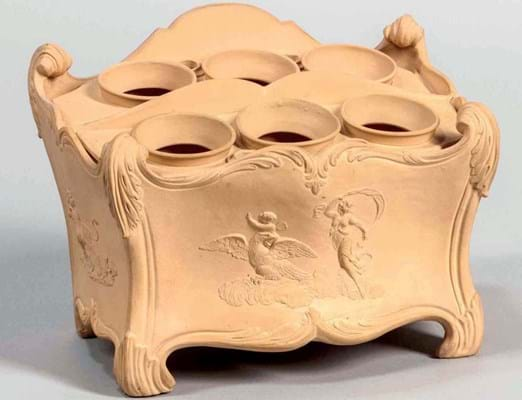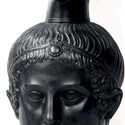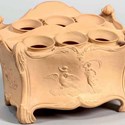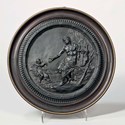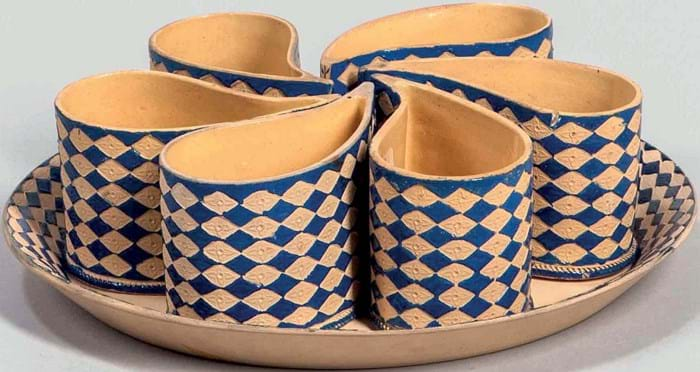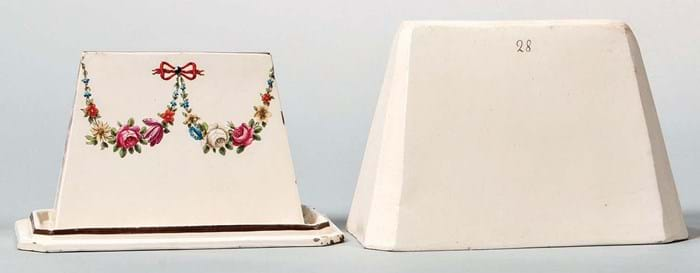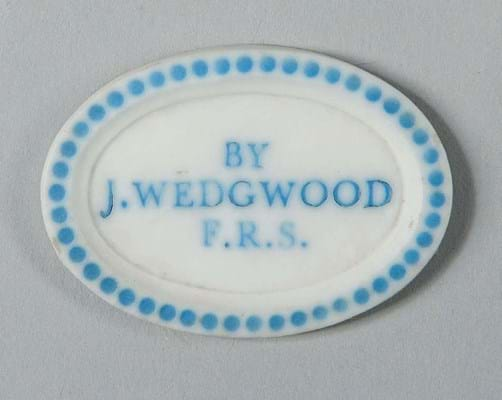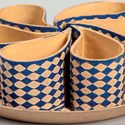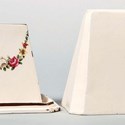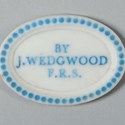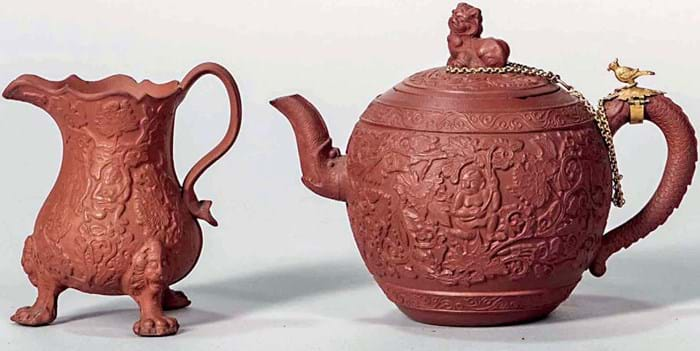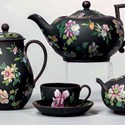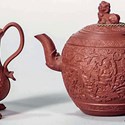At 146 lots, traditional British pottery and porcelain made up a sizeable slice of the 591-lot auction of European Furniture and Decorative Arts held by Skinner (23/20/12% buyer’s premium) in Boston on July 14.
Of that, over half comprised Wedgwood from the English ceramics collection of Mrs and Mrs Samuel Laver.
Americans have been Wedgwood enthusiasts for many years. According to Stuart Slavid, Skinner’s director of ceramics, the Lavers were the last of a group of major collectors based in Philadelphia around the Buten Museum of Wedgwood.
They probably started collecting in the 1950s and by the ‘70s their collection ranged across the board, from 18th century items made in Josiah Wedgwood’s lifetime through to pieces from the second half of the 19th century.
It took in the various types of ceramic bodies that Wedgwood made its own: jasper ware, basalt, caneware, agate, Queen’s ware and majolica. Complementing the Lavers’ ceramics in Skinner’s auction was a group of Wedgwood pieces from other sources, most notably a New York collection that yielded some of the day’s highest prices.
Provenance with resonance
The Laver provenance obviously had resonance for the Wedgwood enthusiasts among Skinner’s clientele, since not only did every one of their pieces sell but 100% of the entire 146-lot ceramics section. The appeal was boosted partly by market freshness but, conceded Slavid, “a lot of that has to do with very conservative estimates”.
In the event, some of those guides were wildly outstripped by the final prices with a third of the ceramic lots exceeding estimate. A case in point was the extraordinary performance of an unmarked black basalt jug formed as a classical head that left its $400-600 guide far behind to take $17,000 (£12,880) from an American collector.
‘Filling gaps’
Slavid felt there was no great rhyme or reason to what proved popular across the sale.
However, in what is a mature market made up largely of established enthusiasts, he observed: “The majority of the Wedgwood collectors out there are filling gaps. They are looking for those pieces and once they find them they’ll pay anything to get them.
“When the next one comes up, it doesn’t sell so well because those people are not bidding any more.”
Thus, although Wedgwood retains its organised group of collectors, it still follows the trajectory of many traditional collecting markets. “The high end is still very strong and the rest very fickle,” said Slavid.
Accordingly, across Wedgwood’s lengthy and massive production run, there is still ample opportunity to buy more standard fare at what can appear ‘bargain’ prices. The group of enamelled basalt teawares pictured here is a case in point. Low three-figure sums secured a number of other single and group lots of 19th century pieces.
Buyers at Skinner were predominantly collectors with Americans heading the list followed by Australia, another major area for Wedgwood enthusiasts, then British interest. The bidders were a combination of absentee and bidders in the room.
Pictured here is a mix of pieces drawn from the Laver collection and other consignors.
Exchange rate on day of sale: £1 = $1.32



